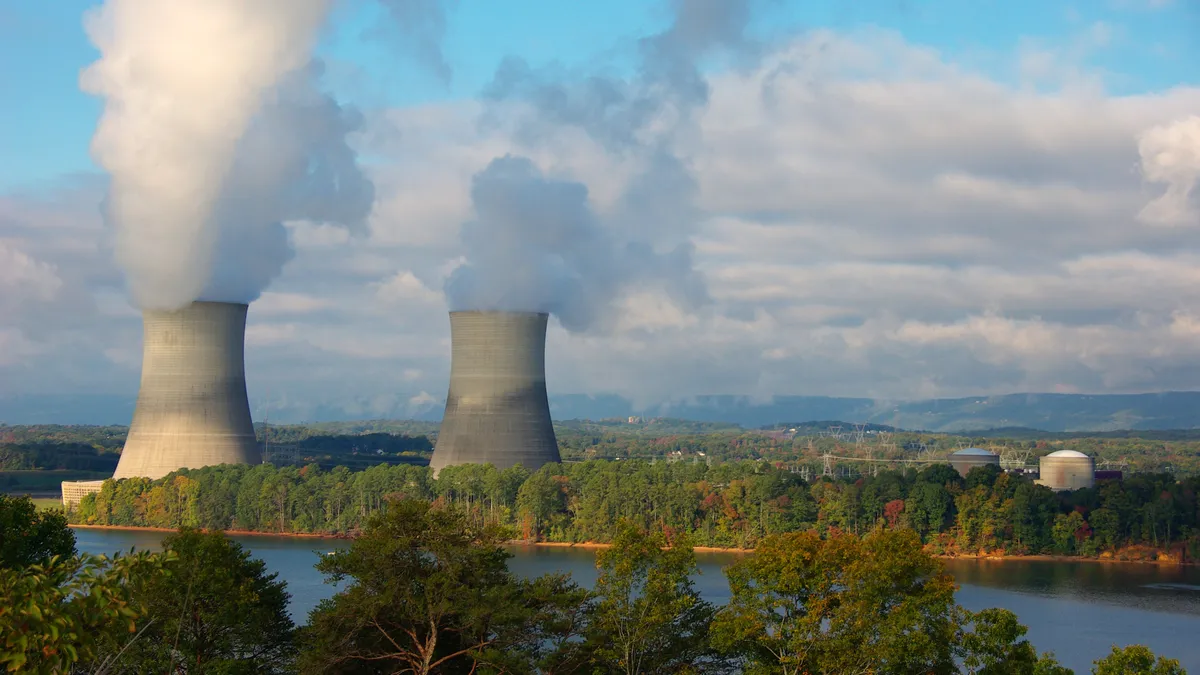Dive Brief:
- Could Duke Energy's Brunswick Nuclear Plant still be producing electricity on its 100th birthday? That's the question raised by the Wilmington Star News in North Carolina as the company looks to extend operating licenses for some of its nuclear facilities in the region as long as possible.
- Last month, Duke CEO Lynn Good told the Winston-Salem Chamber of Commerce that nuclear would continue to be a part of the Carolinas' energy strategy, but was skeptical toward the prospect of constructing a new facility.
- Nuclear facilities are initially granted operating licenses for 40 years, and extensions for another two decades are not uncommon. But operators are now considering 80-year operating lives, though some question the safety of that lifespan.
Dive Insight:
Duke Energy has the second largest nuclear fleet in the nation, with 11 units and almost 11,000 MW spread between the Carolinas. CEO Lynn Good has indicated the company remains committed to the carbon-free generation, but as the company's fleet age, licensing questions are becoming significant.
“Nuclear will continue to be an important part of energy supplies in the Carolinas,” Good said in October at the Winston-Salem Chamber of Commerce. But she also said, "whether or not new nuclear is a part of the picture remains to be seen.”
Duke's Robinson, Oconee units 1, 2 and 3, and Brunswick's pair of reactors, will all reach 60 years of service by 2035. The 1,870-MW Brunswick plant was the first nuclear power plant built in North Carolina, and beginning commercial operation in 1975; an additional unit became operational in 1977.
Good said the company will look to hold on to those facilities "for absolutely as long as we can.”
Developing new nuclear facilities has been a challenge – the U.S. Nuclear Regulatory Commission last month issued an operating license for Tennessee Valley Authority's Watts Bar Unit 2 nuclear reactor, the first such license issued in almost two decades. At the same time, market rules unfavorable to nuclear generation have pushed plants to the brink of closure in some markets. By some accounts, up to 11% of the United States' nuclear generation fleet is at risk of early retirement.
The Obama administration’s finalized Clean Power Plan disappointed many nuclear generators. Under the plan, the five nuclear plants in construction in the U.S. will count toward emissions goals in the states where they are located, but not ones that are already in service. Exsisting plants, while they keep emissions lower than they would otherwise be, do not further reduce greenhouse gas pollution, leading the agency to determine that they should not be counted toward state's emissions goals.
While the Star News may be premature in envisioning a 100-year life for the Brunswick facility, operators of many plants are beginning to eye 80 year licenses. Last year, the New York Times identified seven east coast plants that were prime candidates to operate for eight decades, including three Duke facilities.














